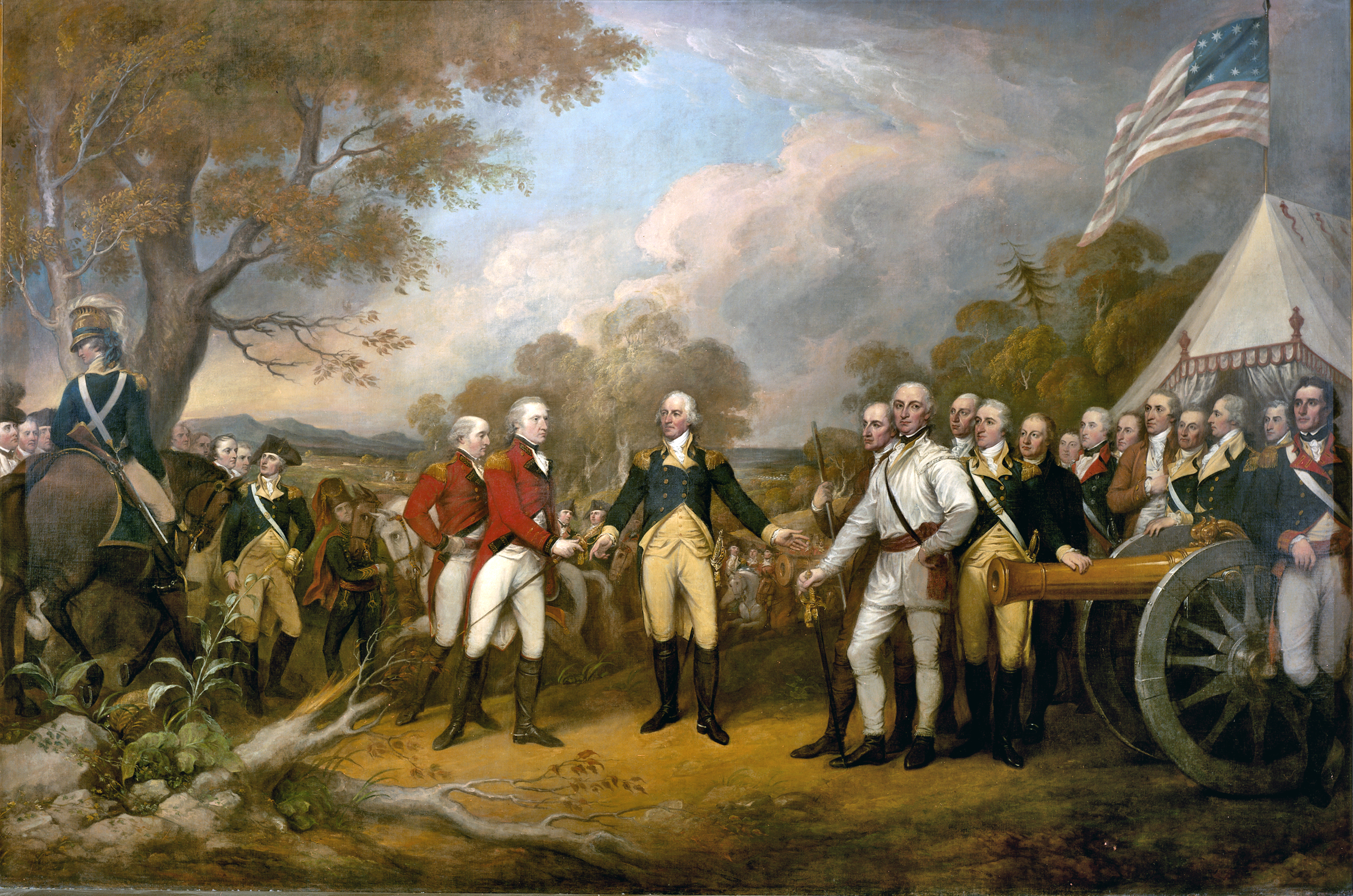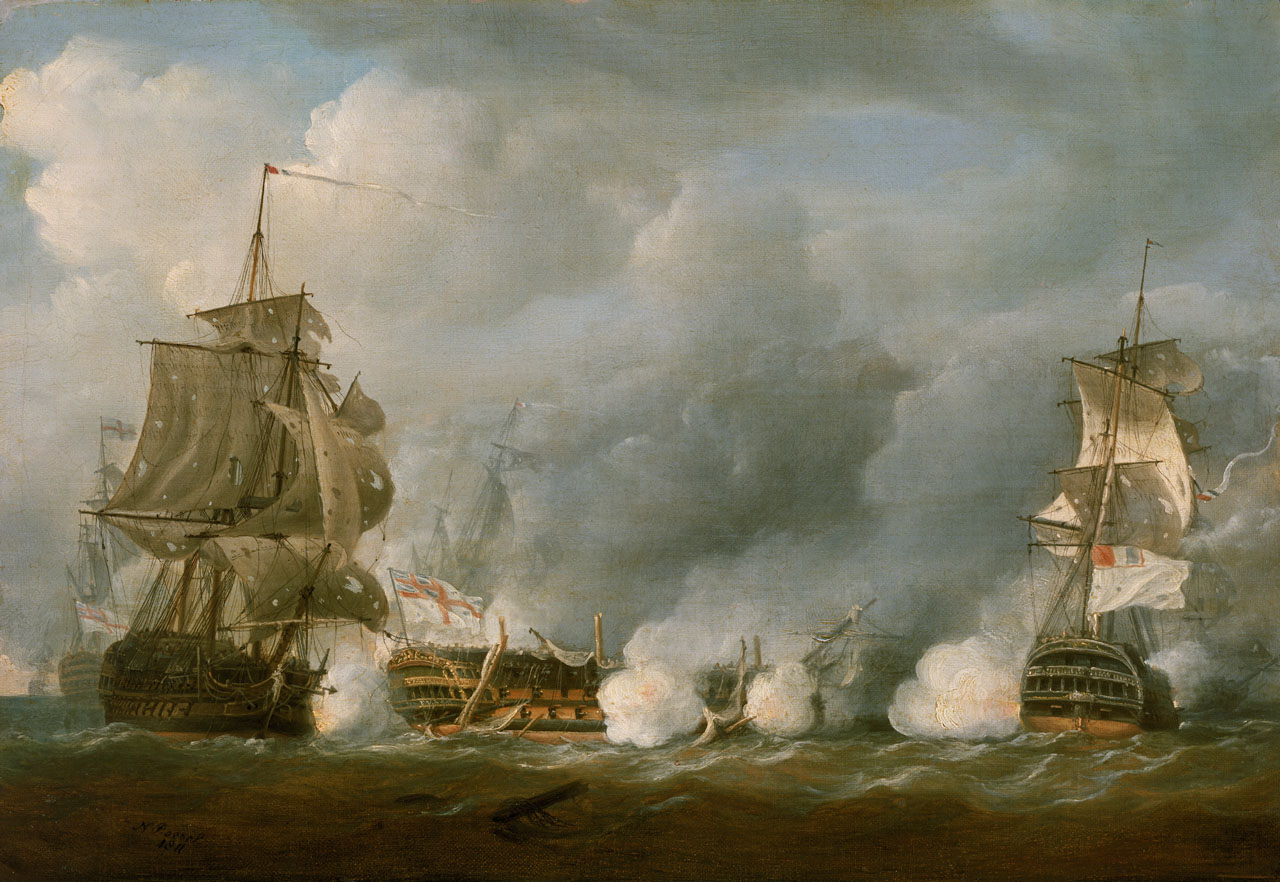|
HMS Pelican (1777)
HMS ''Pelican'' was a 24-gun sixth-rate post ship of the Royal Navy built in 1777 and wrecked in 1781. Construction and commissioning ''Pelican'' cost £5,623.11.0d to build, plus £3,545.0.7d for fitting . She was ship commissioning, commissioned under her first commanding officer, Captain Henry Lloyd, in May 1777. Service ''Pelican'' was first stationed under Lloyd in the North Sea; by 1778 she was stationed off Cape Finisterre and a year later she had transferred to the coast of Portugal. She returned to England for a refit at Sheerness Dockyard between August and September 1779 and was recommissioned in November with Captain William Lockhart in command. Lockhart only stayed with ''Pelican'' briefly and by January 1780 Captain Thomas Haynes had assumed command of the post ship. Under him she sailed for the Jamaica Station on 13 April, where she captured the French privateer ''La Marquise de Saint-Pern'' on 9 December. In June 1781 Captain Cuthbert Collingwood, 1st Baron Coll ... [...More Info...] [...Related Items...] OR: [Wikipedia] [Google] [Baidu] |
Naval Ensign Of Great Britain (1707-1800)
A navy, naval force, military maritime fleet, war navy, or maritime force is the military branch, branch of a nation's armed forces principally designated for naval warfare, naval and amphibious warfare; namely, lake-borne, riverine, littoral zone, littoral, or ocean-borne combat operations and related functions. It includes anything conducted by surface Naval ship, ships, amphibious warfare, amphibious ships, submarines, and seaborne naval aviation, aviation, as well as ancillary support, communications, training, and other fields. The strategic offensive role of a navy is Power projection, projection of force into areas beyond a country's shores (for example, to protect Sea lane, sea-lanes, deter or confront piracy, ferry troops, or attack other navies, ports, or shore installations). The strategic defensive purpose of a navy is to frustrate seaborne projection-of-force by enemies. The strategic task of a navy also may incorporate nuclear deterrence by use of submarine-launche ... [...More Info...] [...Related Items...] OR: [Wikipedia] [Google] [Baidu] |
Sheerness Dockyard
Sheerness Dockyard was a Royal Navy Dockyard located on the Sheerness peninsula, at the mouth of the River Medway in Kent. It was opened in the 1660s and closed in 1960. Location In the Age of Sail, the Royal Navy would often establish shore facilities close to safe Anchorage (shipping), anchorages where the fleet would be based in home waters. This was the case when, around 1567, a Royal Dockyard was established at Chatham, Kent, on the bank of the River Medway. At that time, Tudor navy, HM Ships would often lay at anchor either within the river, on Chatham Reach (geography), Reach or Gillingham, Kent, Gillingham Reach, or beyond it, around The Nore. Chatham Dockyard had its disadvantages, however. The vagaries of wind and tide, coupled with the restricted depth of the river, meant that vessels entering the river, for repairs or to replenish supplies at Chatham, could be delayed for considerable lengths of time. What was an inconvenience at times of peace became a serious imp ... [...More Info...] [...Related Items...] OR: [Wikipedia] [Google] [Baidu] |
1777 Ships
Events January–March * January 2 – American Revolutionary War – Battle of the Assunpink Creek: American general George Washington's army repulses a British attack by Lieutenant General Charles Cornwallis, in a second battle at Trenton, New Jersey. * January 3 – American Revolutionary War – Battle of Princeton: American general George Washington's army defeats British troops. * January 13 – Mission Santa Clara de Asís is founded in what becomes Santa Clara, California. * January 15 – Vermont declares its independence from New York, becoming the Vermont Republic, an independent country, a status it retains until it joins the United States as the 14th state in 1791. * January 21 – The Continental Congress approves a resolution "that an unauthentic copy, with names of the signers of the Declaration of independence, be sent to each of the United States. *February 5 – Under the 1st Constitution of Georgia, 8 counties are ... [...More Info...] [...Related Items...] OR: [Wikipedia] [Google] [Baidu] |
Shipwreck
A shipwreck is the wreckage of a ship that is located either beached on land or sunken to the bottom of a body of water. It results from the event of ''shipwrecking'', which may be intentional or unintentional. There were approximately three million shipwrecks worldwide as of January 1999, according to Angela Croome, a science writer and author who specialized in the history of underwater archaeology (an estimate rapidly endorsed by UNESCO and other organizations). When a ship's crew has died or abandoned the ship, and the ship has remained adrift but unsunk, they are instead referred to as Ghost ship, ''ghost ships''. Types Historic wrecks are attractive to maritime archaeology, maritime archaeologists because they preserve historical information: for example, studying the wreck of revealed information about seafaring, warfare, and life in the 16th century. Military wrecks, caused by a skirmish at sea, are studied to find details about the historic event; they reveal ... [...More Info...] [...Related Items...] OR: [Wikipedia] [Google] [Baidu] |
Morant Cays
The Morant Cays is an offshore island group 51 km SSE off Morant Point, Jamaica. It is one of two offshore island groups belonging to Jamaica, the other one is the Pedro Cays. History In 1780, , under the command of Cuthbert Collingwood was navigating off Morant Cays when a hurricane descended around the area and the ship was destroyed on the Cays. The crew were shipwrecked but managed to get ashore in rafts where they remained for ten days until rescued. The island group has been the site of many other shipwrecks. The cays were annexed in 1862 by the United Kingdom and added to Jamaica in 1882. Morant Cays Lighthouse was built on the island to warn shipping of the presence of the islands. Geography The cays are located at and consist of four small islets grouped closely together along the south-eastern rim of Morant Bank, an extensive crescent-shaped bank of coral, over 7 km long, rising from a depth of 1,000 m. The area of Morant Bank is about 100 km2. The aggrega ... [...More Info...] [...Related Items...] OR: [Wikipedia] [Google] [Baidu] |
Hurricane
A tropical cyclone is a rapidly rotating storm system with a low-pressure area, a closed low-level atmospheric circulation, strong winds, and a spiral arrangement of thunderstorms that produce heavy rain and squalls. Depending on its location and strength, a tropical cyclone is called a hurricane (), typhoon (), tropical storm, cyclonic storm, tropical depression, or simply cyclone. A hurricane is a strong tropical cyclone that occurs in the Atlantic Ocean or northeastern Pacific Ocean. A typhoon is the same thing which occurs in the northwestern Pacific Ocean. In the Indian Ocean and South Pacific, comparable storms are referred to as "tropical cyclones". In modern times, on average around 80 to 90 named tropical cyclones form each year around the world, over half of which develop hurricane-force winds of or more. Tropical cyclones typically form over large bodies of relatively warm water. They derive their energy through the evaporation of water from the ocean ... [...More Info...] [...Related Items...] OR: [Wikipedia] [Google] [Baidu] |
Cuthbert Collingwood, 1st Baron Collingwood
Vice Admiral Cuthbert Collingwood, 1st Baron Collingwood (26 September 1748 – 7 March 1810) was an admiral of the Royal Navy. Collingwood was born in Newcastle upon Tyne and later lived in Morpeth, Northumberland. He entered the Royal Navy at a young age, eventually rising from midshipman to lieutenant in the American Revolutionary War, where he saw action at the Battle of Bunker Hill during which he led a naval brigade. In the 1780s and 1790s Collingwood would participate in the French Revolutionary Wars, during which time he captained several ships and reached the rank of Post Captain. He took part in several key naval battles of the time, including the Glorious First of June and the Battle of Cape St Vincent. In 1799, he was promoted to rear-admiral and later vice-admiral, where he undertook a variety of command roles during the Napoleonic Wars, including serving as second in command of the British Fleet under Nelson at the Battle of Trafalgar. Following Nelson's death, C ... [...More Info...] [...Related Items...] OR: [Wikipedia] [Google] [Baidu] |
Privateer
A privateer is a private person or vessel which engages in commerce raiding under a commission of war. Since robbery under arms was a common aspect of seaborne trade, until the early 19th century all merchant ships carried arms. A sovereign or delegated authority issued commissions, also referred to as letters of marque, during wartime. The commission empowered the holder to carry on all forms of hostility permissible at sea by the usages of war. This included attacking foreign vessels and taking them as prizes and taking crews prisoner for exchange. Captured ships were subject to condemnation and sale under prize law, with the proceeds divided by percentage between the privateer's sponsors, shipowners, captains and crew. A percentage share usually went to the issuer of the commission (i.e. the sovereign). Most colonial powers, as well as other countries, engaged in privateering. Privateering allowed sovereigns to multiply their naval forces at relatively low cost by mobilizi ... [...More Info...] [...Related Items...] OR: [Wikipedia] [Google] [Baidu] |
Refit
Refitting or refit of boats and marine vessels includes repairing, fixing, restoring, renewing, mending, and renovating an old vessel. Refitting has become one of the most important activities inside a shipyard. It offers a variety of services for an old vessel of any size and kind starting with the construction itself and what is added to it, such as hardware, electric & hydraulic systems, entertainment systems, etc. Ship refits can range from relatively small changes to and including cutting the ship in half to facilitate near-total overhauls and redesign of interior spaces and modification or replacement of engines, systems or other equipment. Refitting can be divided into several main subjects: *''Adding'' or ''replacing'': for example replacing old deck equipment with new or refurbished ones. *''Modifying'': for example modifying a yacht for participating in winning a regatta. *''Customizing'': for example customizing a yacht for the owner's needs and desires. *''Modernizing' ... [...More Info...] [...Related Items...] OR: [Wikipedia] [Google] [Baidu] |
Deptford
Deptford is an area on the south bank of the River Thames in southeast London, in the Royal Borough of Greenwich and London Borough of Lewisham. It is named after a Ford (crossing), ford of the River Ravensbourne. From the mid 16th century to the late 19th it was home to Deptford Dockyard, the first of the Royal Navy Dockyard, Royal Dockyards. This was a major shipbuilding dock and attracted Peter the Great to come and study shipbuilding. Deptford and the docks are associated with the knighting of Francis Drake, Sir Francis Drake by Elizabeth I, Queen Elizabeth I aboard the ''Golden Hind'', the legend of Walter Raleigh, Sir Walter Raleigh laying down his cape for Elizabeth, James Cook, Captain James Cook's third voyage aboard HMS Resolution (1771), HMS ''Resolution'', and the mysterious apparent murder of Christopher Marlowe in a house along Deptford Strand. Though Deptford began as two small communities, one at the ford, and the other a fishing village on the Thames, Deptfo ... [...More Info...] [...Related Items...] OR: [Wikipedia] [Google] [Baidu] |





